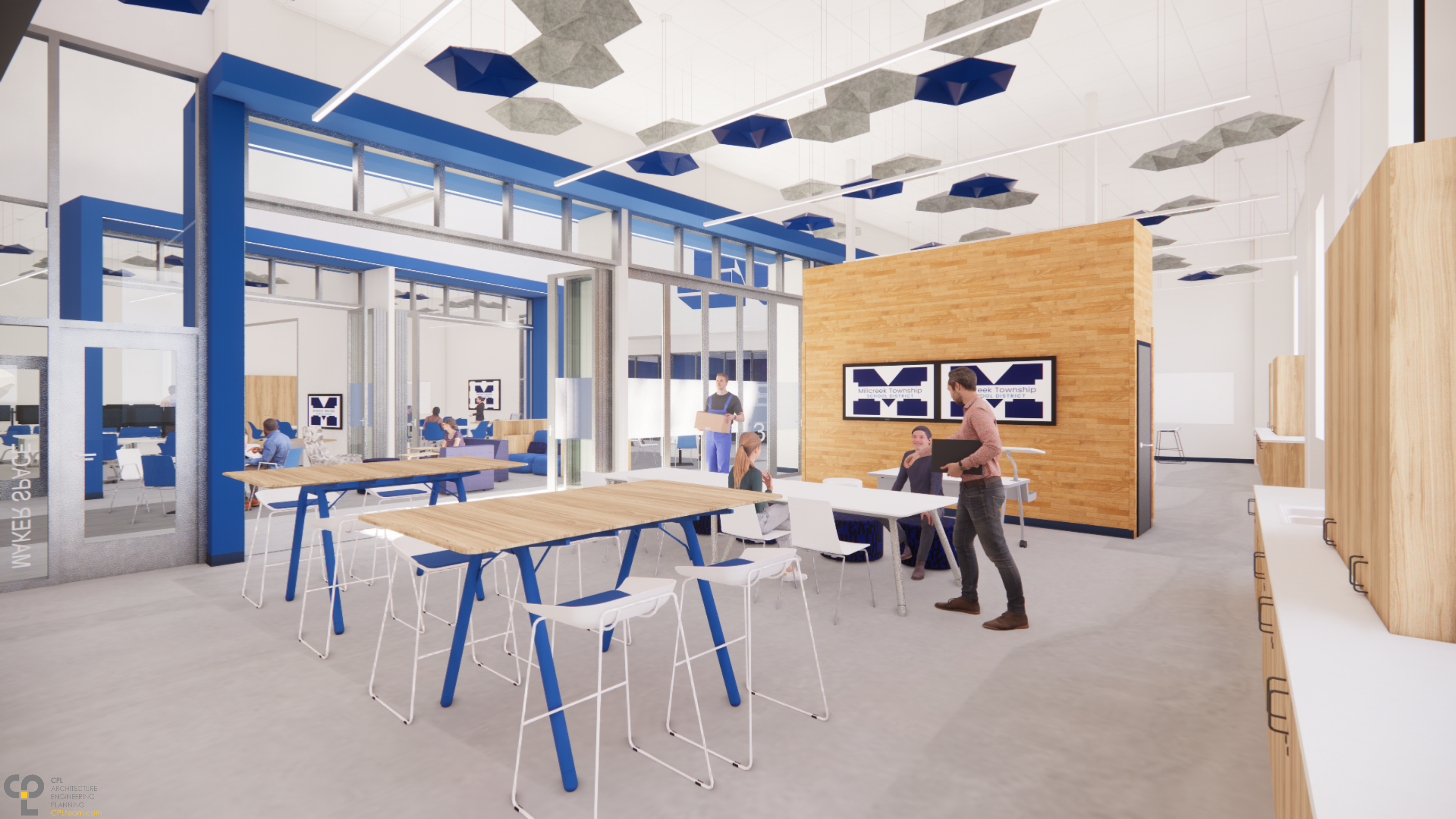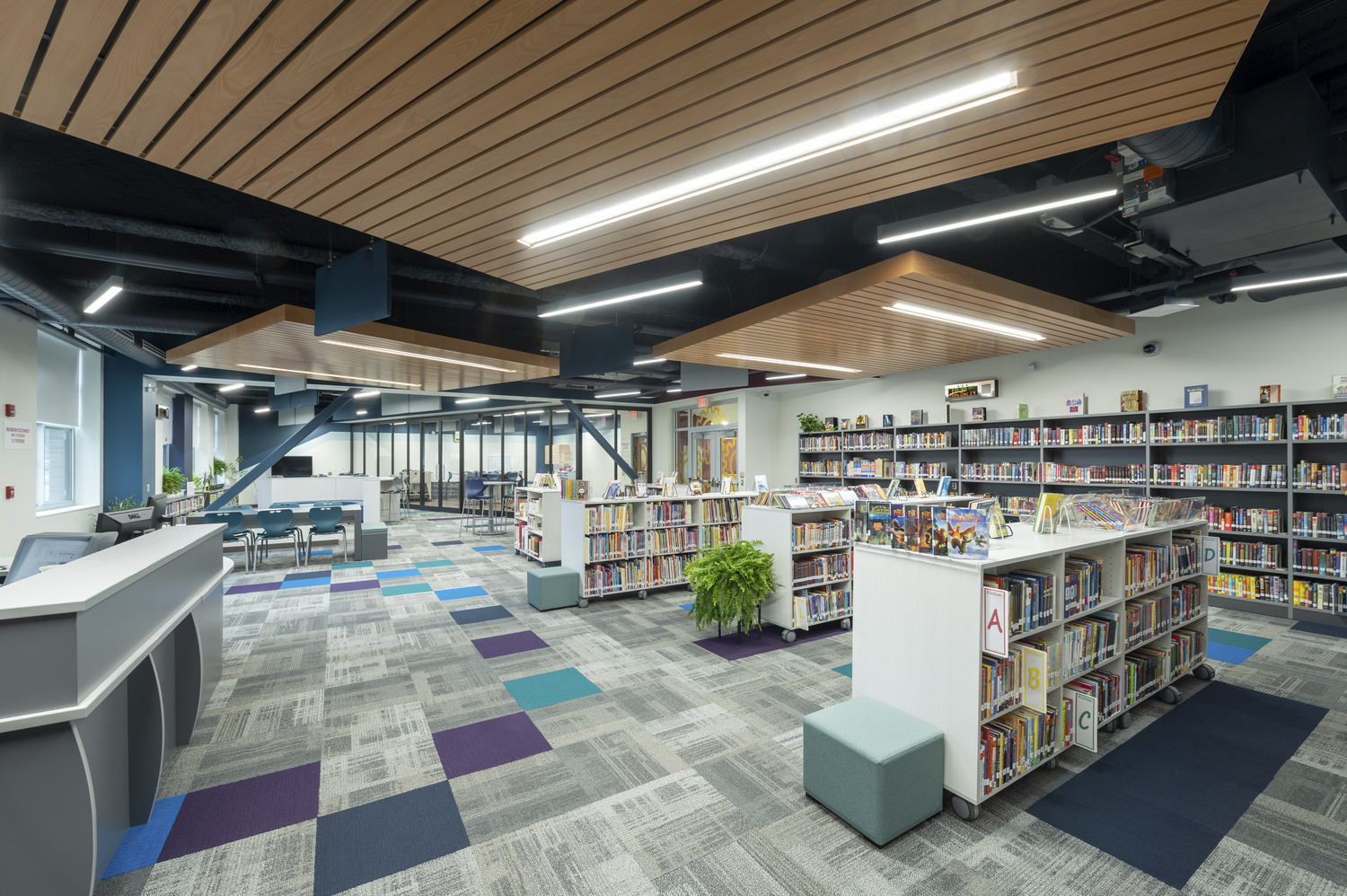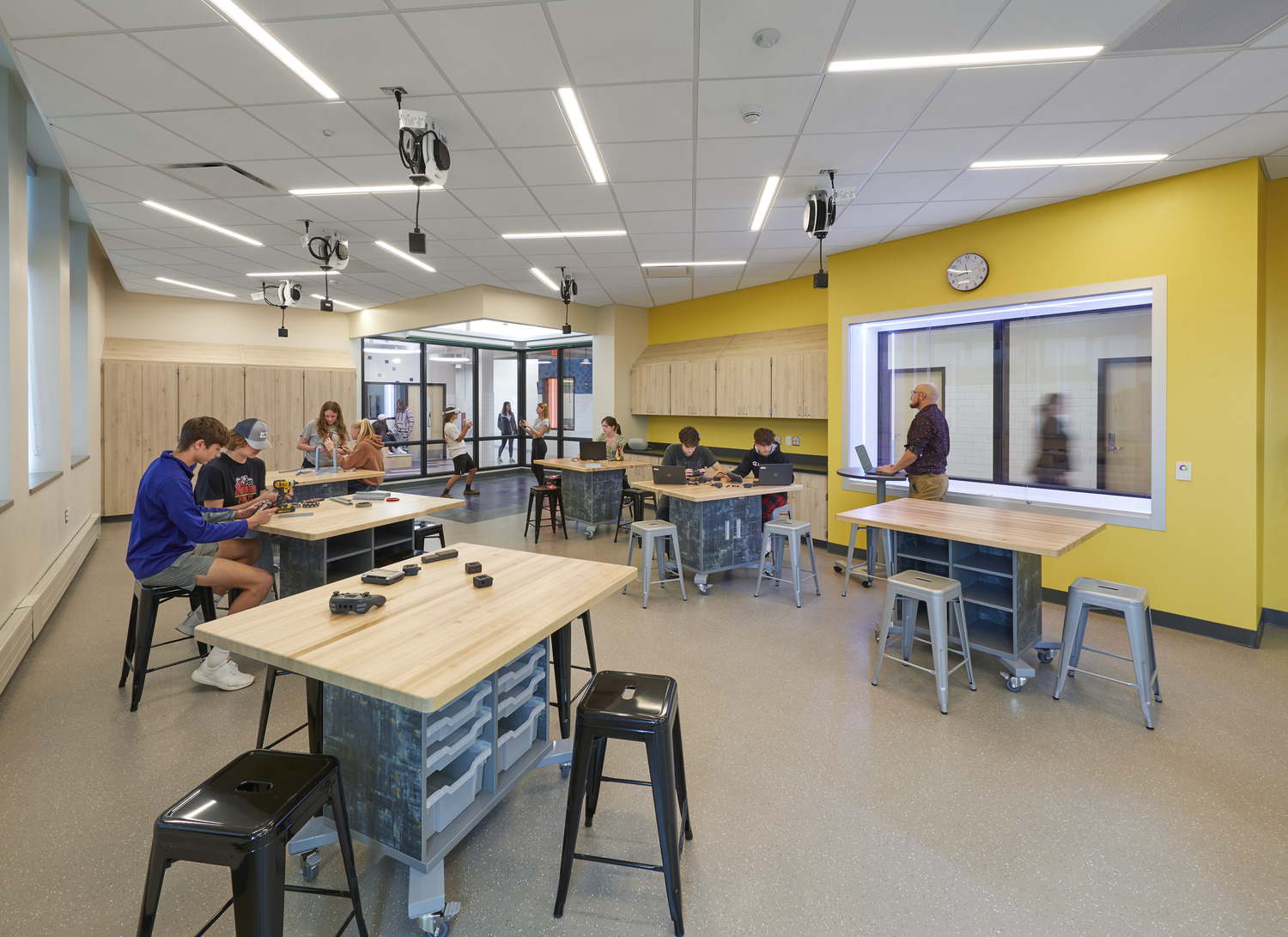Share This Story
In the realm of K-12 education, adaptive reuse has gained favor as a game-changing design strategy.
Gone are the days when “old” was considered a bad word in design; instead, repurposing existing structures has become a worthy consideration for school districts across the United States.
Breathing new life into outmoded or underutilized buildings, adaptive reuse provides an opportunity to create inspirative learning environments that better cater to students’ evolving needs. Moreover, this sustainable design practice fosters a host of economic, environmental and social perks that simply cannot be ignored.
Building Smarter, Saving Bigger
Through adaptive reuse, school districts can unlock a myriad of benefits—and economic gains are some of the most compelling.
Adaptive reuse dramatically cuts construction costs by leveraging existing infrastructure and structural components, allowing schools to invest more capital into academic programs that enrich the overall student experience.
Completing renovations is also faster than undertaking an entirely new construction project from scratch. With a building’s shell already in place, designers can focus on interior modifications relating to classroom functionality; establish robust infrastructure to support learning; and deploy the latest technological accoutrements. This streamlined approach results in earlier project closeout and occupancy.
Furthermore, in a volatile construction climate, adaptive reuse minimizes the negative impact that scarcity of raw materials, labor shortages and a disrupted supply chain can have on a project’s success.

©CPL – Upcoming renovations at McDowell High School exemplify the concept of adaptive reuse. The district is making alterations to the school’s underutilized auditorium to create a new science, technology, engineering and mathematics (STEM) hub with immersive virtual reality classrooms and designated areas for small group study. This cost-effective technique will not only save the district money, but add tremendous educational value by building upon their technology-based curriculums.
Leaning Into the Green Advantage
Environmental sustainability is another element driving the adoption of adaptive reuse practices.
The greenest buildings are those which have already been built; the Environmental Protection Agency (EPA) estimates that it would take 65 years for a new, energy-efficient facility to recuperate the energy spent while demolishing a building that could otherwise be repurposed.
Approximately 66% of existing commercial buildings in the United States were constructed prior to 1980, and are expected to remain in use beyond 2050. Per the EPA, these buildings—with underperforming mechanical systems and building envelopes—account for nearly 40% of greenhouse gas emissions. This underscores the critical need to reimagine our current infrastructure to help reduce carbon emissions.
Rather than replace buildings, we can decrease the amount of waste they produce by sustainably converting them and incorporating renewable energy sources, such as solar and wind power and energy storage systems. In fact, it’s projected that today’s best practices can increase energy and water efficiency in renovation projects by 30-50%.
This method not only helps school districts and the communities in which they reside, but also sets an example for students, instilling in them an appreciation for environmental stewardship and responsible design.

©Dylan Buyskes, Onion Studio, Inc. – As part of a larger capital improvement project, an energy performance contract (EPC) was implemented at the Avoca Central School District’s century-old primary building to spur long-term utility enhancements. The existing building management system was swapped out for a cohesive direct-digital control system (DDS), optimizing heat, ventilation and air conditioning (HVAC) control and minimizing waste. CO2 sensors were also installed to facilitate automatic performance adjustments, leading to a remarkable 27% energy savings for the district.
Honoring Community Culture and Heritage
Apart from offering economic and environmental benefits, adaptive reuse can rejuvenate neighborhoods by blending vintage and contemporary designs to preserve historically significant or architecturally remarkable buildings.
By revitalizing schools and underutilized areas, we can create vibrant educational experiences that align with community renewal. Additionally, existing buildings of prominence often possess unique features that infuse the learning environment with character, sparking students’ creativity and curiosity.
Inviting the public into this process can also serve to build trust and consensus, yielding insights that inform essential design decisions. This synergistic tactic strengthens the bond between the institution and the community, contributing to a shared sense of local pride.

©Tim Wilkes Photography – Engaging area residents was an imperative part of the planning strategy at York Middle/High School, where forward-thinking educators reconfigured the underused third floor into a home for a new science, technology, engineering, art and mathematics (STEAM) program. Conversations with school officials, department teachers and community members emphasized the importance of integrating versatile spaces with a fresh look that embodies the building’s original charm. Thanks to their feedback, the school has become a modern hub that nurtures boundless technological discovery close to its roots.
Learn more about this project—and see a Matterport scan of the finished STEAM wing
Embracing the Past to Shape the Future
School buildings are vital to our communities, defining their identity and sense of place. Restoring these cherished assets is a longstanding honor and responsibility that spans decades, and in some cases, more than a century.
It isn’t always easy or practical to retrofit a facility to meet the latest programmatic need, or increasingly stringent mandates—in fact, the conventional response has been to just start over—but as the cost of construction rises and project delivery timeframes grow, we’re increasingly turning to adaptive reuse to meet tight budgets, limited construction windows, shifting student demands and the newest teaching pedagogies.
This approach opens up endless possibilities for learning, enabling young minds to thrive in today’s world through improved collaboration and critical-thinking, while uplifting their communities in powerful ways.
Together, we can transform education through the revitalization of spaces, championing innovation to usher in a new era of enlightenment for all.
